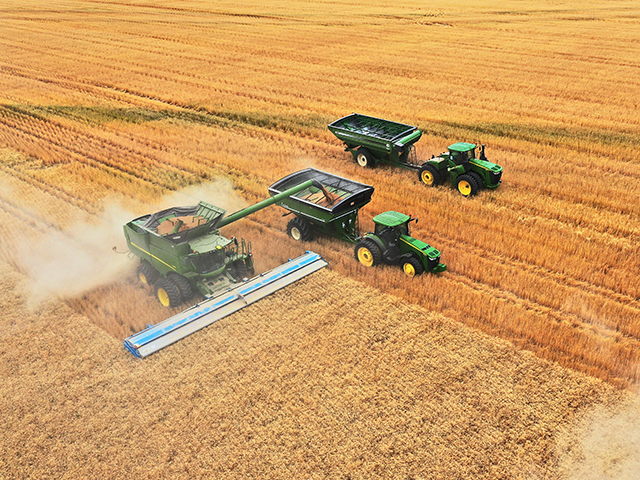Inside the Market
2021 KC Wheat Trends Up
While soybeans experienced a bullish price move in the latter half of 2020, and corn prices saw bullish excitement in 2019, KC wheat prices have had no significant upward moves the past eight years.
Even spring wheat had a bullish run of spot prices to $8.68 1/2 in 2017, related to drought in the northwestern U.S. Plains, but December KC wheat hasn't been able to sustain trading above $6 a bushel since 2014. KC wheat prices have been experiencing their own kind of drought, and it's not surprising the past few years of plantings have dropped to or near 100-year lows.
As bearish as the mood has been, I have to say the price outlook is looking up in 2021. It is far too early to be confident about weather assessments for the world's wheat regions in 2021, but for starters, it is worth noting planting conditions have been dry in Russia.
Here in the U.S., the western half of the country is much drier than it was a year ago. The U.S. Drought Monitor shows Colorado, Oregon and West Texas dealing with extreme drought. Lesser degrees of drought are seen across the northwestern U.S., including the Dakotas and Nebraska. Even southern Illinois and Indiana are considered abnormally dry.
P[L1] D[0x0] M[300x250] OOP[F] ADUNIT[] T[]
The U.S. Seasonal Drought Outlook from the National Weather Service expects drought to expand across the southern U.S. Plains and reach the Mississippi Delta in the final quarter of 2020. The forecast is supported by La Niña conditions currently in effect and is expected to last into winter.
Those same La Niña conditions have a tendency to keep wheat crops dry in Argentina, and dry conditions have already been noted in central and southern Argentina.
It's not easy for a market that has been as depressed as KC wheat to believe higher prices could be possible again. That's especially after the world just produced another record wheat crop in 2020 and expects a record surplus of 11.73 billion bushels of wheat at the end of 2020-21.
Here in the U.S., however, USDA's estimate of 385 million bushels of U.S. ending HRW wheat stocks is the lowest in five years and is also supported by the lowest ending-stocks estimate for SRW wheat in six years.
If there is one thing we learned from the corn and soybean rallies in the late summer of 2020, it is that sometimes, even the most bearish of market conditions can change quickly. I don't know if 2021 will be the year KC wheat can sustain trading above $6 a bushel again, but KC wheat prices won't stay trapped between $4 and $6 forever. Given the early dry outlook for fall and winter, higher winter wheat prices look likely for early 2021.
> Read Todd's blog at about.dtnpf.com/markets.
> You may email Todd at todd.hultman@dtn.com, or call 402-255-8489.
[PF_1120]
(c) Copyright 2020 DTN, LLC. All rights reserved.




